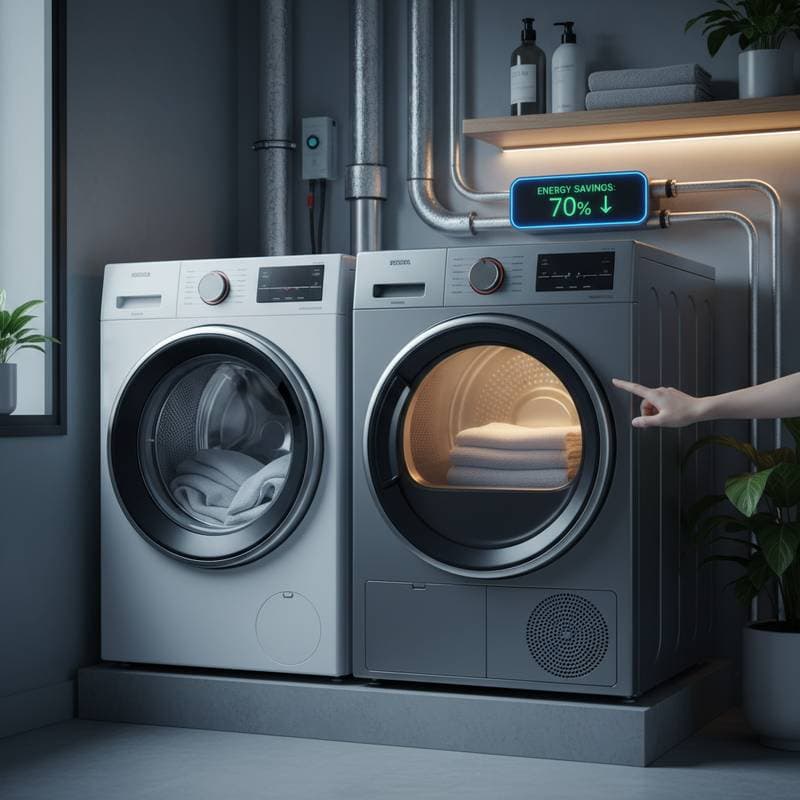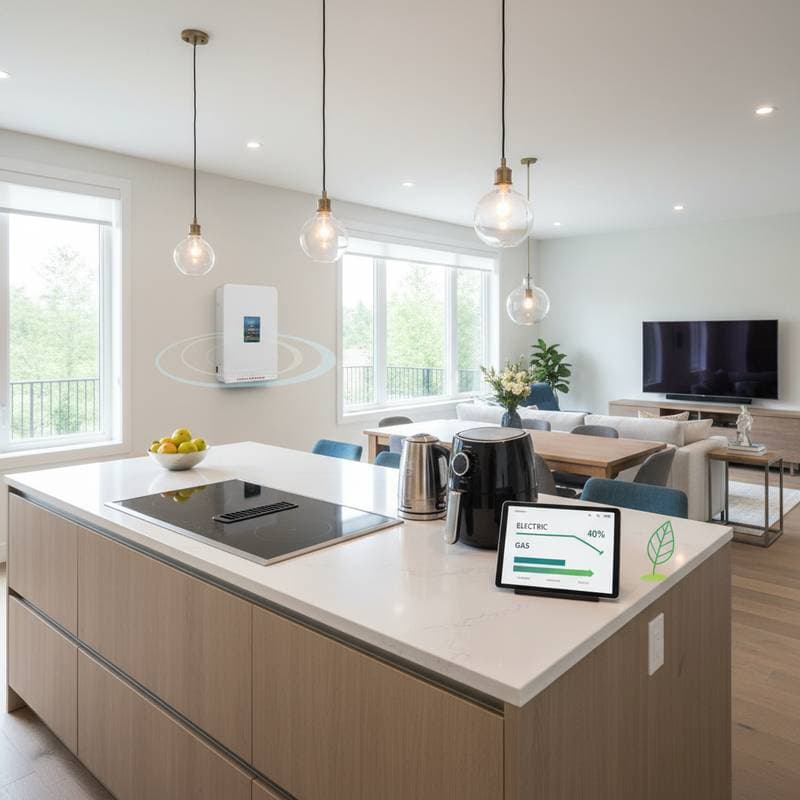Key Points
- Induction cooktops form a cornerstone of home electrification efforts, delivering superior energy efficiency, enhanced safety, and elevated performance relative to gas alternatives.
- Homeowners qualify for rebates reaching $900 upon replacing gas ranges with induction models, based on income levels and available regional programs.
- Induction systems reduce cooking-related energy consumption by 10 to 20 percent, while elevating indoor air quality and minimizing maintenance expenses.
- Moving beyond gas represents an environmental commitment and a prudent financial decision that elevates a property's enduring market value.
- Advance planning for electrical infrastructure, cookware suitability, and installation requirements facilitates a seamless upgrade process.
Why Electrification Incentives Matter
Expanded rebate initiatives render induction upgrades more accessible for homeowners. These programs offer up to $900 to cover the expense of substituting a gas range with an induction counterpart, contingent upon household income and geographic eligibility. Such incentives aim to expedite adoption of sustainable energy practices by alleviating initial financial barriers.
The advantages surpass the direct rebate amount. Induction cooking diminishes yearly energy demands, yielding savings of 10 to 30 percent on electricity costs associated with meal preparation. In a standard household, this equates to annual reductions of $50 to $100. Although modest in isolation, these savings accumulate over ten years, augmented by gains in safety and air purity, to deliver substantial overall benefits.
Comparing Energy and Performance Metrics
Gas burners utilize only 35 to 40 percent of their energy to generate heat that contacts the cookware. Electric resistance elements achieve approximately 70 percent efficiency. Induction technology, by contrast, channels up to 90 percent of energy straight to the pot or pan. This superior transfer results in quicker heat-up periods, reduced energy loss, and decreased home cooling needs, as minimal excess warmth disperses into the surrounding space.
Direct performance evaluations reveal that induction halves boiling durations relative to gas. This efficiency extends to precision, with immediate heat responses enabling meticulous adjustments for simmering sauces or exact searing akin to commercial setups. Individuals prioritizing both operational excellence and ecological responsibility find induction achieves an exceptional integration of these qualities.
The Indoor Air Quality Advantage
Gas combustion emits nitrogen dioxide, carbon monoxide, and particulate matter, which provoke respiratory discomfort and pose risks to long-term health. Proper exhaust systems mitigate but do not fully eliminate these emissions, especially in compact kitchens or during winter months with limited ventilation.
Induction cooking removes combustion sources completely. Consequently, indoor environments feature purer air, reduced moisture buildup, and diminished cooking aromas. Families including young children, elderly members, or those with respiratory conditions often cite this air quality enhancement as a primary motivation for adoption. Additionally, decreased grease accumulation and simplified venting maintenance lower ongoing operational costs.
Selecting the Right Induction Range
Model selection hinges on culinary preferences, current electrical setup, and financial considerations. Consider these categories:
- Entry-Level Models: Priced from $600 to $1,000, these deliver reliable functionality through basic touch interfaces and standard power levels, ideal for routine family use.
- Midrange Options: Ranging from $1,200 to $2,000, these incorporate refined temperature regulation, flexible bridge zones, and conveniences such as Wi-Fi connectivity or automated sensors.
- Premium Units: Beginning at $2,500, these provide sophisticated zone management, integrated ventilation systems, and durable construction for intensive cooking demands.
Prioritize units bearing efficiency and safety certifications from reputable organizations. Established brands with robust support networks further mitigate potential service disruptions.
Overcoming Common Misconceptions
A frequent concern involves restricted cooking versatility or the necessity for specialized tools with induction. In practice, the majority of standard pots and pans incorporate ferromagnetic materials that function effectively. Replacement items, when required, prove both accessible and cost-effective through diverse retail channels.
Users occasionally anticipate a steep adaptation period, but proficiency develops rapidly. The exacting control frequently elevates outcomes, particularly for temperature-sensitive preparations. Initial unfamiliarity with the flameless operation fades as responsiveness integrates into daily routines.
Audible elements receive undue attention. Certain induction appliances generate subtle humming or clicking from cooling fans or electromagnetic activity, yet these remain inconspicuous during active use. Ensuring full cookware contact with the surface eliminates most vibrational noise.
Health, Safety, and Everyday Comfort
Induction enhances household safety profiles beyond mere efficiency. Absent open flames or residual hot surfaces, burn incidents decrease significantly, with the cooktop cooling promptly after utensil removal. Built-in shutoff mechanisms avert excessive temperatures, and consistent heat distribution curtails overcooking-related waste.
Daily operations benefit from subdued noise levels and simplified maintenance. Spilled materials do not bake onto the surface, permitting effortless cleaning with minimal effort. These practical improvements foster greater enjoyment in kitchen activities over extended periods.
Making It Happen: Steps Toward Your Induction Upgrade
Embark on the transition with a structured approach to maximize efficiency and minimize disruptions.
-
Evaluate Electrical Infrastructure: Consult a licensed electrician to confirm your home's panel capacity supports induction demands, typically requiring a 40-amp circuit. Address any upgrades early to avoid delays.
-
Assess Cookware Inventory: Test existing pieces with a magnet; those adhering qualify as compatible. Budget $100 to $300 for essential replacements if needed, focusing on durable, flat-bottomed options.
-
Research Rebate Eligibility: Visit local utility or government sites to verify income-based incentives up to $900. Gather documentation such as income statements and purchase receipts for prompt application processing.
-
Select and Purchase: Compare models based on size, features, and reviews from trusted sources. Opt for retailers offering installation services and warranties exceeding one year.
-
Schedule Professional Installation: Engage certified technicians for safe integration, including proper wiring and ventilation adjustments. Expect one to two days for completion in most setups.
-
Test and Optimize: Upon activation, experiment with settings to familiarize yourself. Monitor energy bills quarterly to track savings and adjust habits for peak performance.
This methodical process not only secures immediate rebates and efficiencies but also positions your kitchen for sustained sustainability and enhanced daily functionality.










